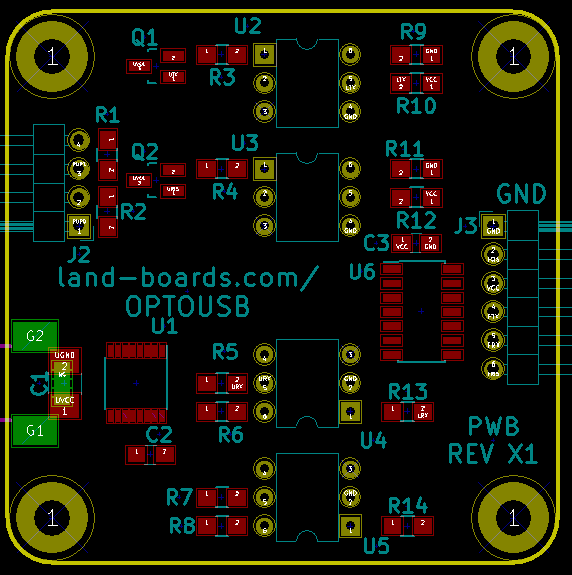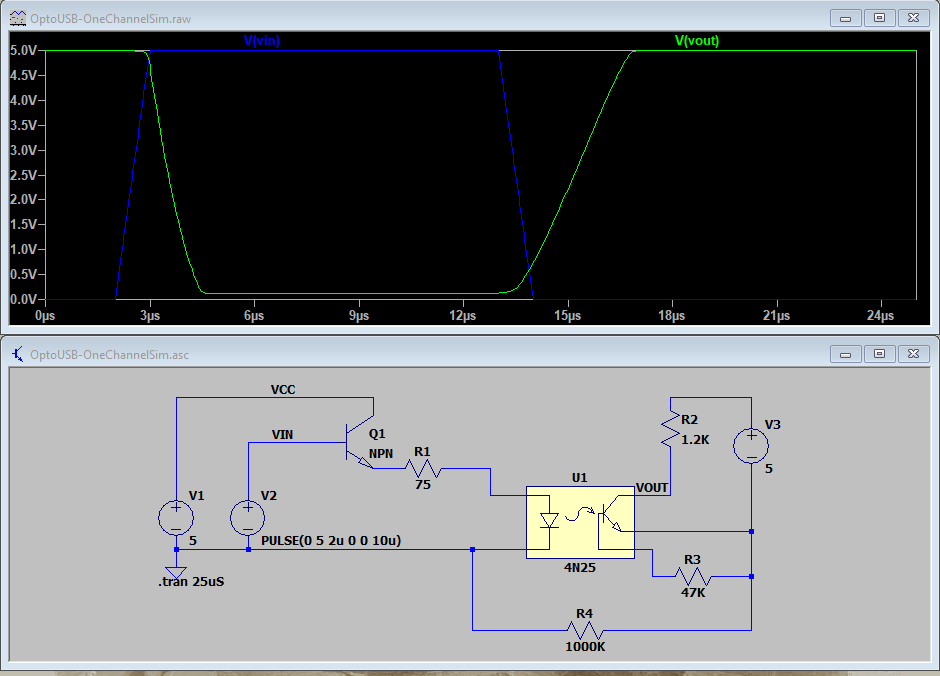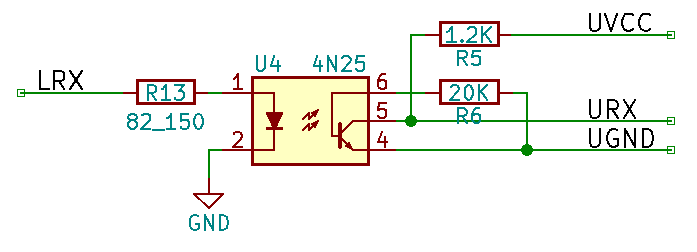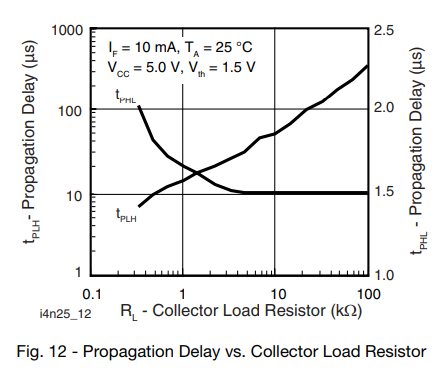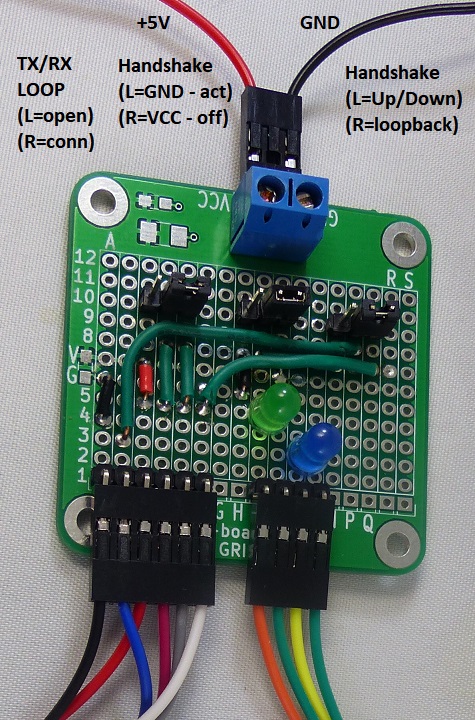OPTOUSB
Contents
Features
- USB to TTL level Serial (FTDI) Interface
- Genuine FTDI FT230XS part
- Standard FTDI drivers
- Buffered lines on the TTL level side
- Schmidt Trigger
- Voltage level hysteresis
- Improved slew rate
- Schmidt Trigger
- OptoIsolated Connections
- Transmit, Receive, RTS, CTS
- Configured for High Speed Serial
- The Host USB connection is independent of the state of the FTDI side of the interface
- Host side can communicate with the USB host whether or not the target is even powered up
- Target power on/off doesn't cause a USB disconnect - handy for debug
- Fast operation
- 3.3V or 5V FTDI voltage (order option)
- Transmit/Receive LED Connectors
- On-board LED resistors
- 49x49mm card
- (4) #4 Mounting Holes
Block Diagram
Separate Power Domains
- The OPTOUSB card has two distinct power domains.
- One of the domains is the USB side where the power comes from the USB connector/cable.
- The other power domain is on the TTL side where the power comes from the FTDI connector.
- This is unlike "normal" FTDI interfaces where the USB connection can power the FTDI side.
- This is the purpose of the optical isolation - to isolate the ground of the USB side from the target (FTDI) side.
Connectors
J1 - Mini USB Connector
- Standard USB Mini connector
J2 - Transmit/Receive LED connections
- PUP0 - LED Pullup to USB Power
- TXLED - Transmit LED
- PUP1 - LED Pullup to USB Power
- RXLED - Receive LED
J3 - FTDI Connector
- Signals are references to external system
- GND
- RTS (In to card)
- VCC (3.3V or 5V) - Power must be supplied to this pin
- Receive (Out from card)
- Transmit (In to card)
- CTS (Out from card)
Drivers
- [ FTDI Drivers]
Layout
Transfer Rate Characterization
- LTSpice Simulation results
- 8.6uS per bit = 115,200 baud
Opto-Isolator Drive Circuits
- The card has two independent, isolated power domains
- The USB side is powered from the USB 5V
- The FTDI side is powered from external power
- Connected via header or backfeeding the FTDI connector with voltage
- Voltage is one of either 3.3V or 5V
- 4N25 Optoisolator used between the two sides
- Optoisolator has Vf = 1.3V typical
- Optoisolator has 20% CTR (min)
- Optoisolator can be fed with up to 50 mA of drive current
USB side Drive Power
- USB side has 2N3904 transistor for driving the optoisolator
- Vce(Sat) at 10 mA is 0.2V
- Vce(Sat) at 50 mA is 0.3V
- 5V drops are across transistor (0.3V), optoisolator (1.3V) and series resistor
- Opto voltage is 5 - 0.3 - 1.3 = 3.4V
- Opto drive current needs to be 5x the output current (due to the 20% CTR)
- Assume output current (5 mA)
- Optoisolator LED drive current needs to be 25 mA
- 3.4V / .025A = 136 Ohms (Use 150 Ohms for drive series resistor)
- 150 Ohms will be 22.6 mA drive (good compromise drive current value)
- 22.6 mA drive current at 20% CTR will allow collector current to be 4.5 mA
TTL side Drive Power
- Optimal resistor value is at cross-over point where the H-L and L-H prop delays trade-off
- For 5V, that's about 1.2K
- 5V at 1.2 ohms is 4.1 mA
- 4.5 mA collector current (from above)
- 5V at 1.2 ohms is 4.1 mA
5V FTDI side
- Use 1.2K pull-up from above
3.3V FTDI side
- 4N25 is not characterized for 3.3V operation in the chart but assume the same current
- Vce(sad) = 0.3V
- 3.3-3 = 3V
- 3V / 0.0041A = 731 ohms (680 or 750 are standard 5% values that are near)
Card Test
- UUT
- 5V or 3.3V Power Supply (card build option)
- Test card
- Run puTTY
- Baud rate = 115,200 baud
- Hardware handshake RTS/CTS
- Loopback test



